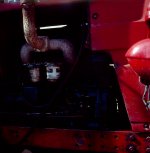ywenz
Veteran
I'm currently using an Epson 4180 flatbed to scan my 35mm negs. I mostly shoot film to post them online at web resolutions. Lately, I've been thinking of getting a dedicated film scanner because I've been convincing myself that my flatbed is not doing any justice to the images from my leica lens. (Do I have a point here?) My question to you, is will a dedicated scanner make that much of a difference when the final size of the scan will be reduced to web resolutions, 900x600-ish ? I like the Coolscan V ED, but it's $600! Maybe a cheaper alternative can make the decision easier to swallow... Let me hear your thoughts.


